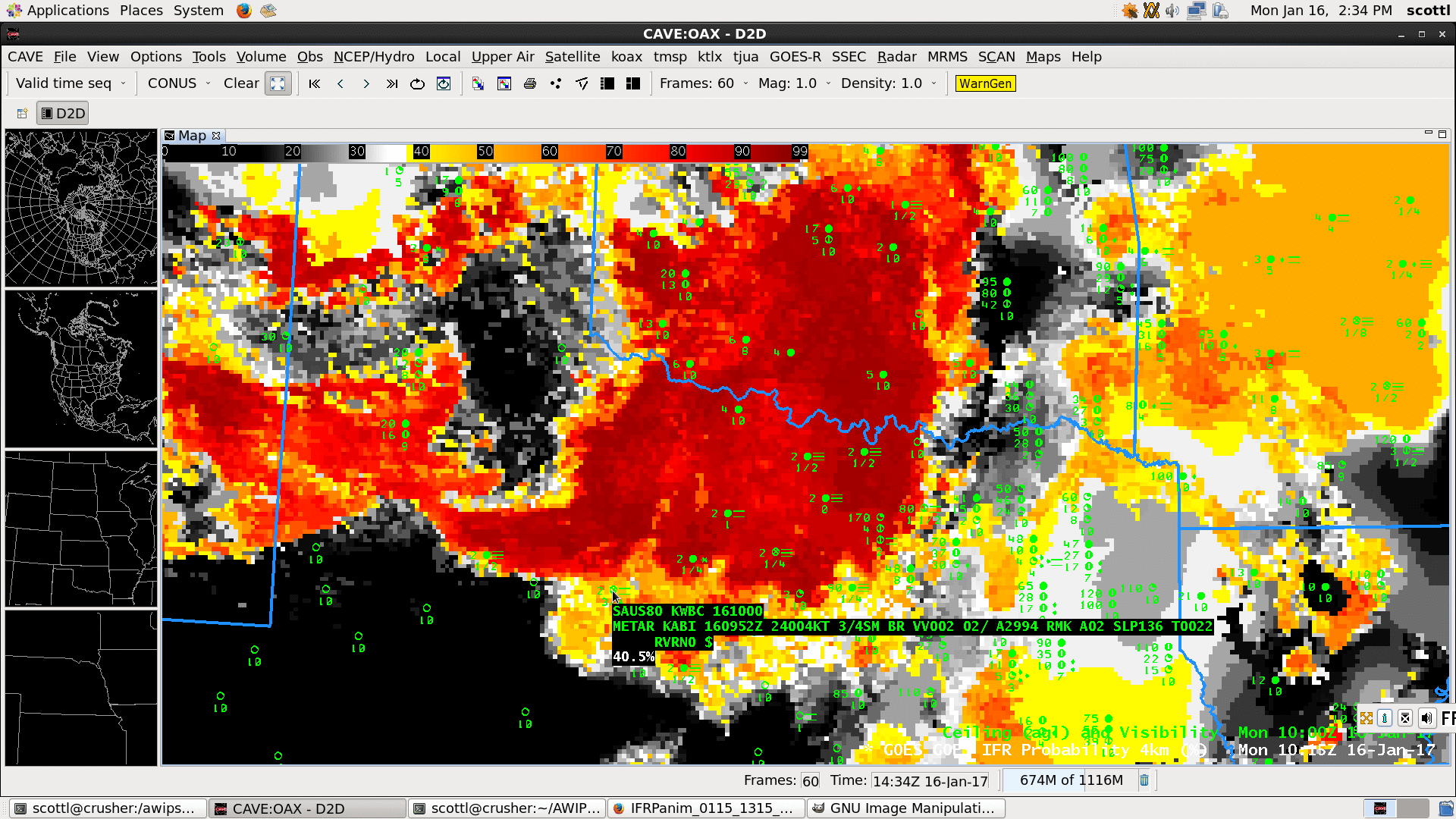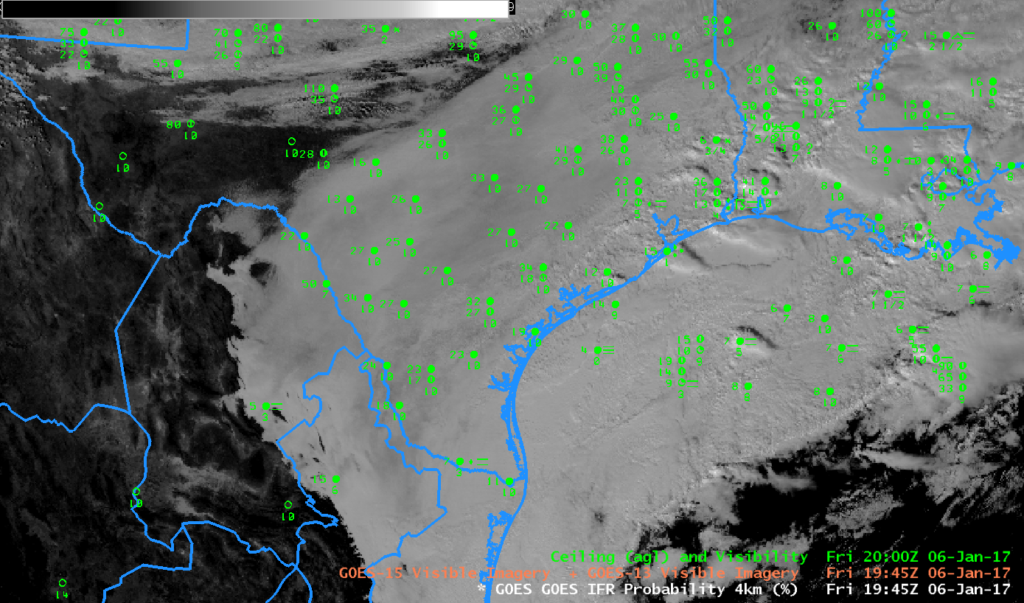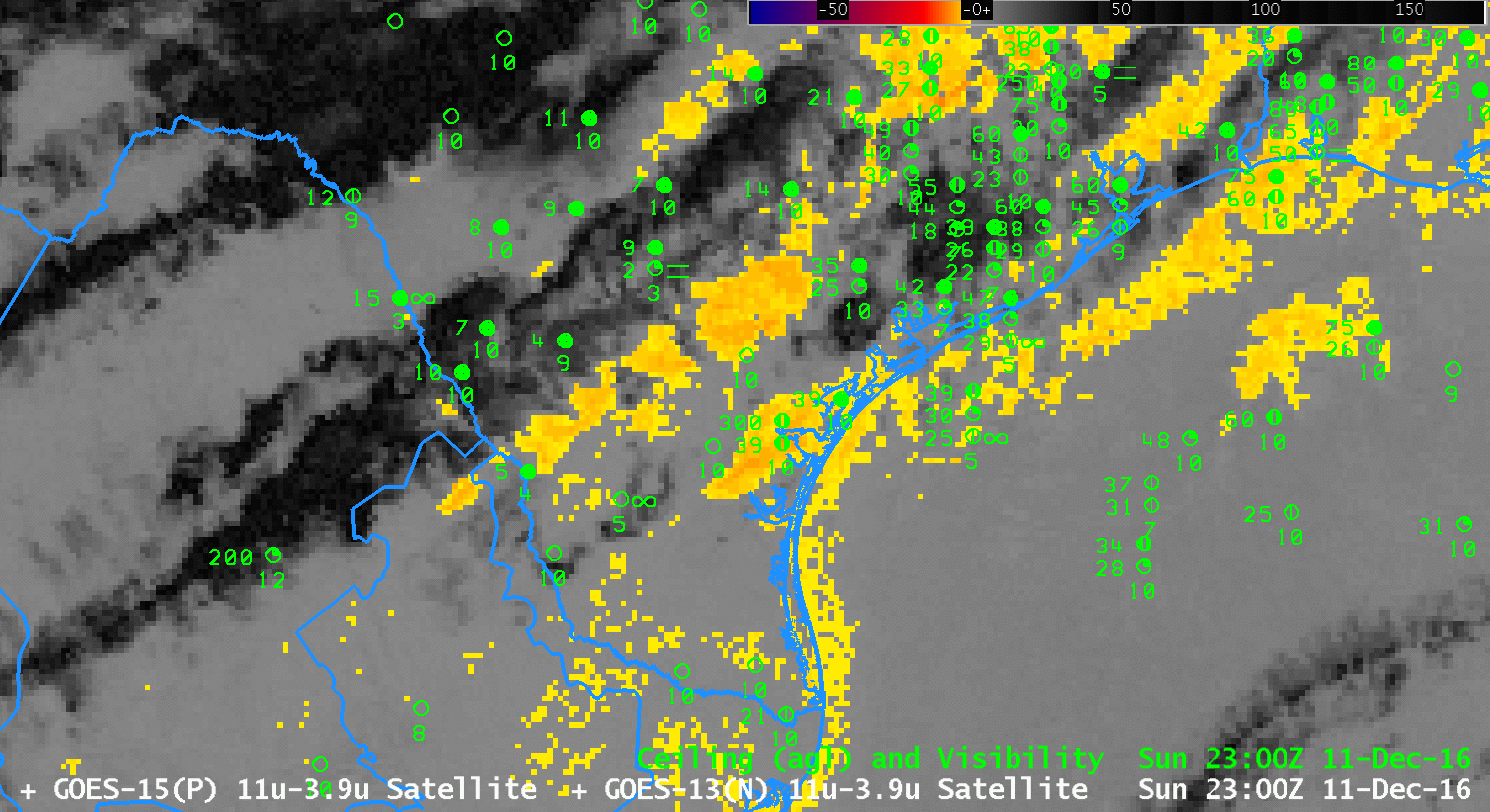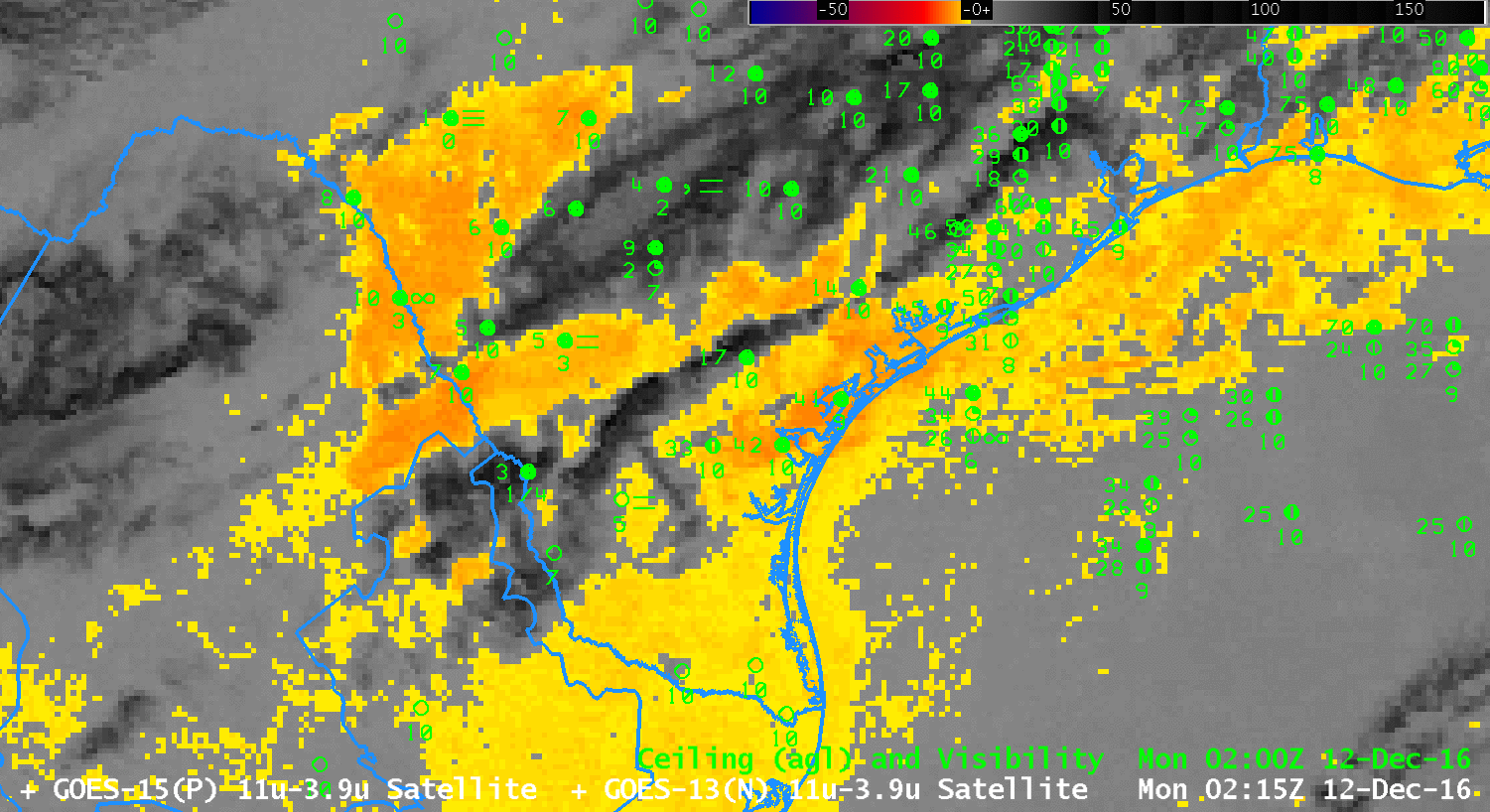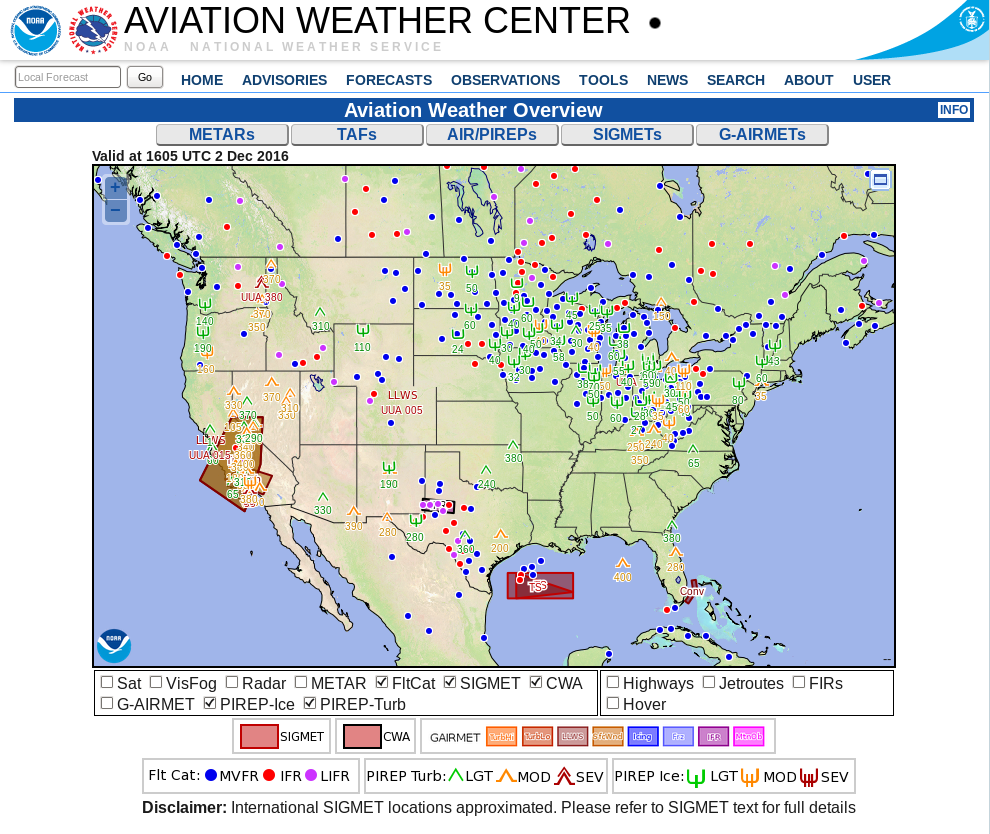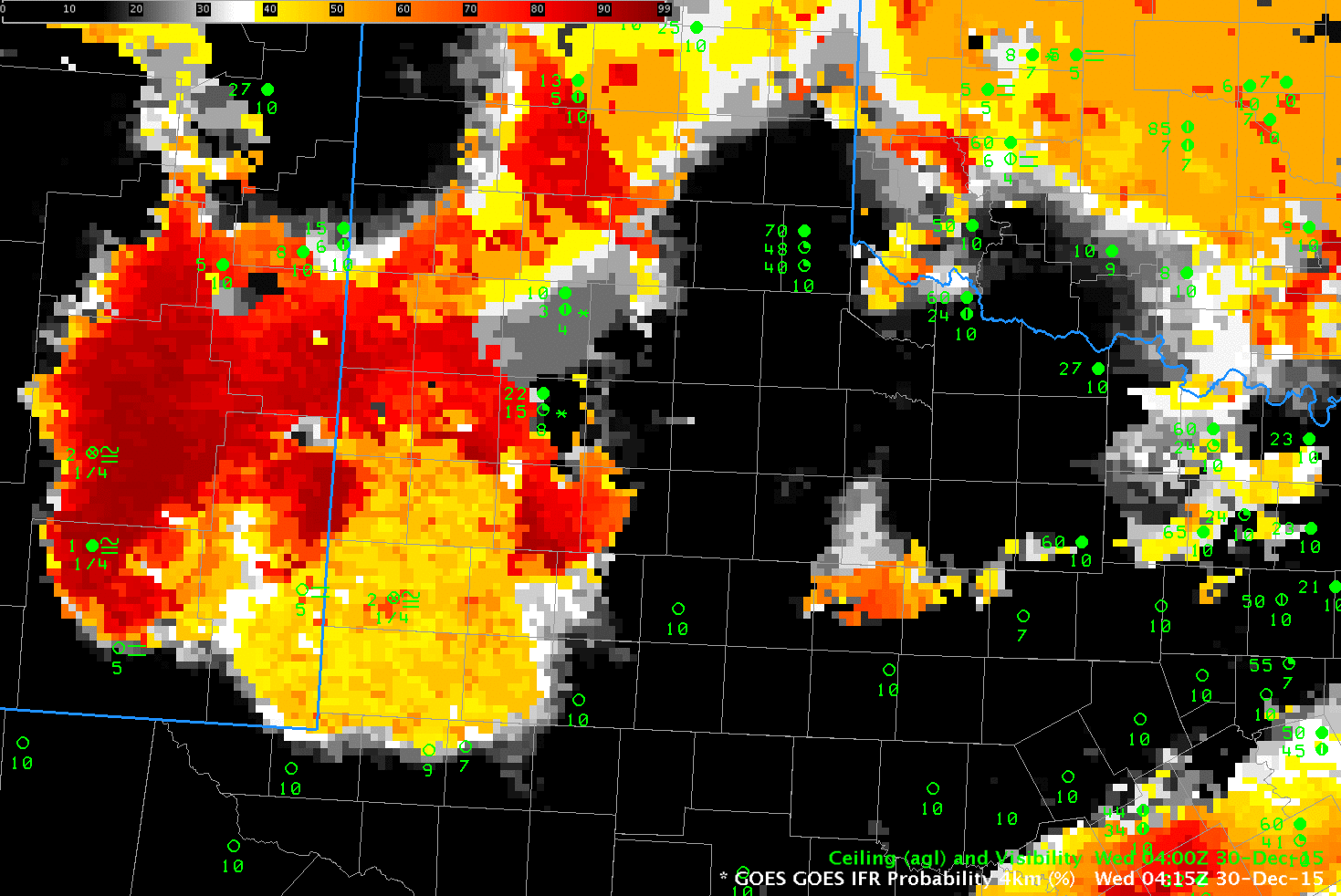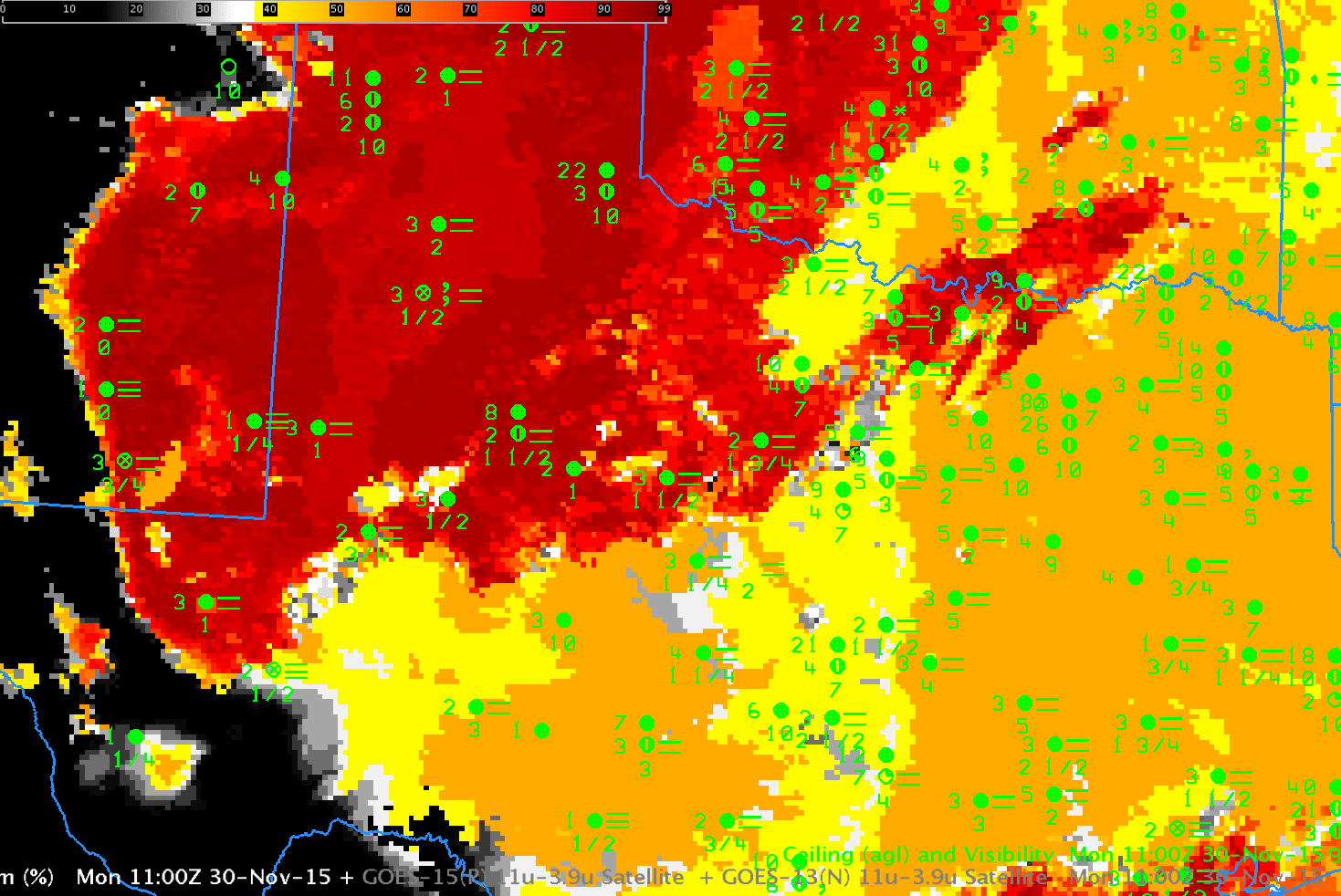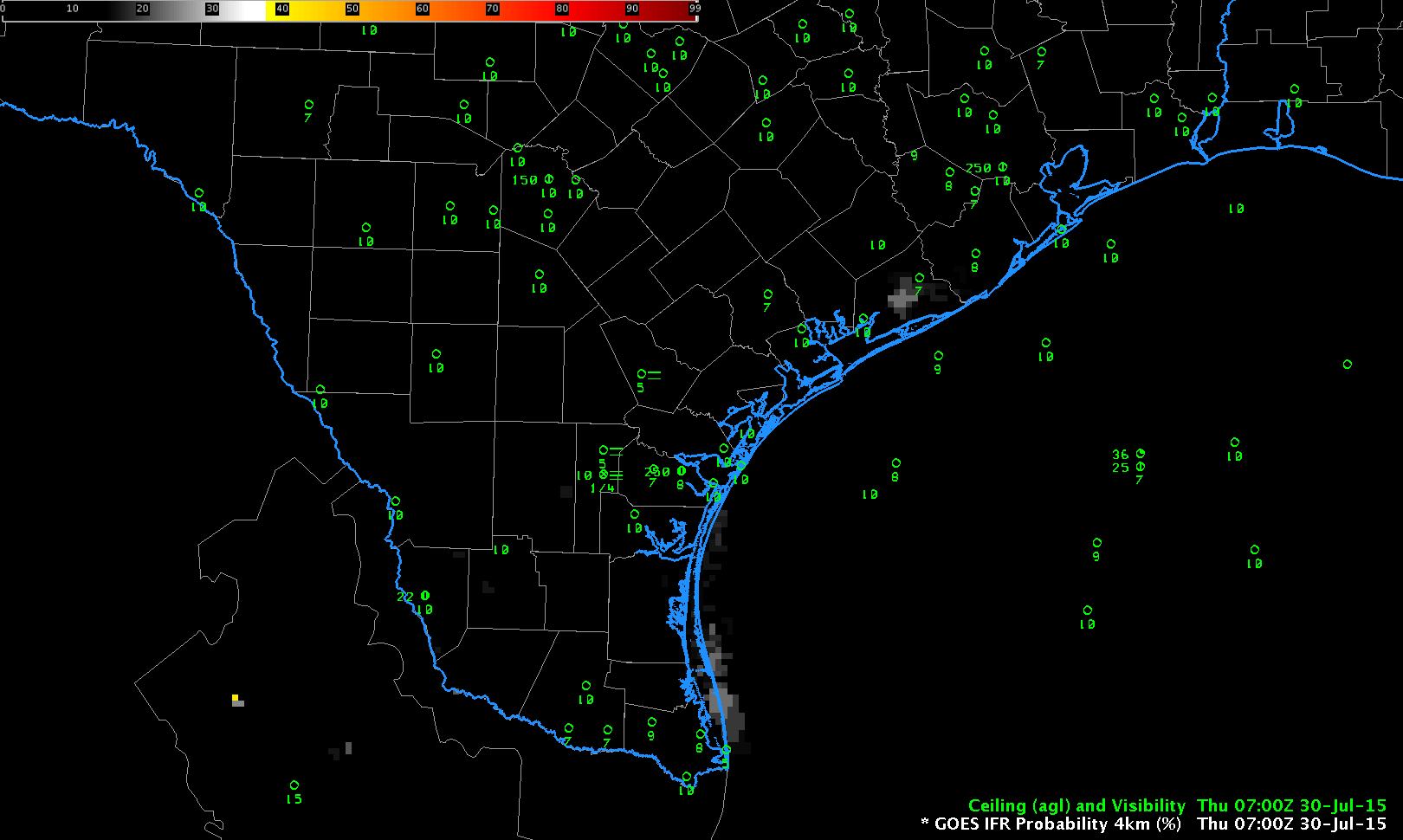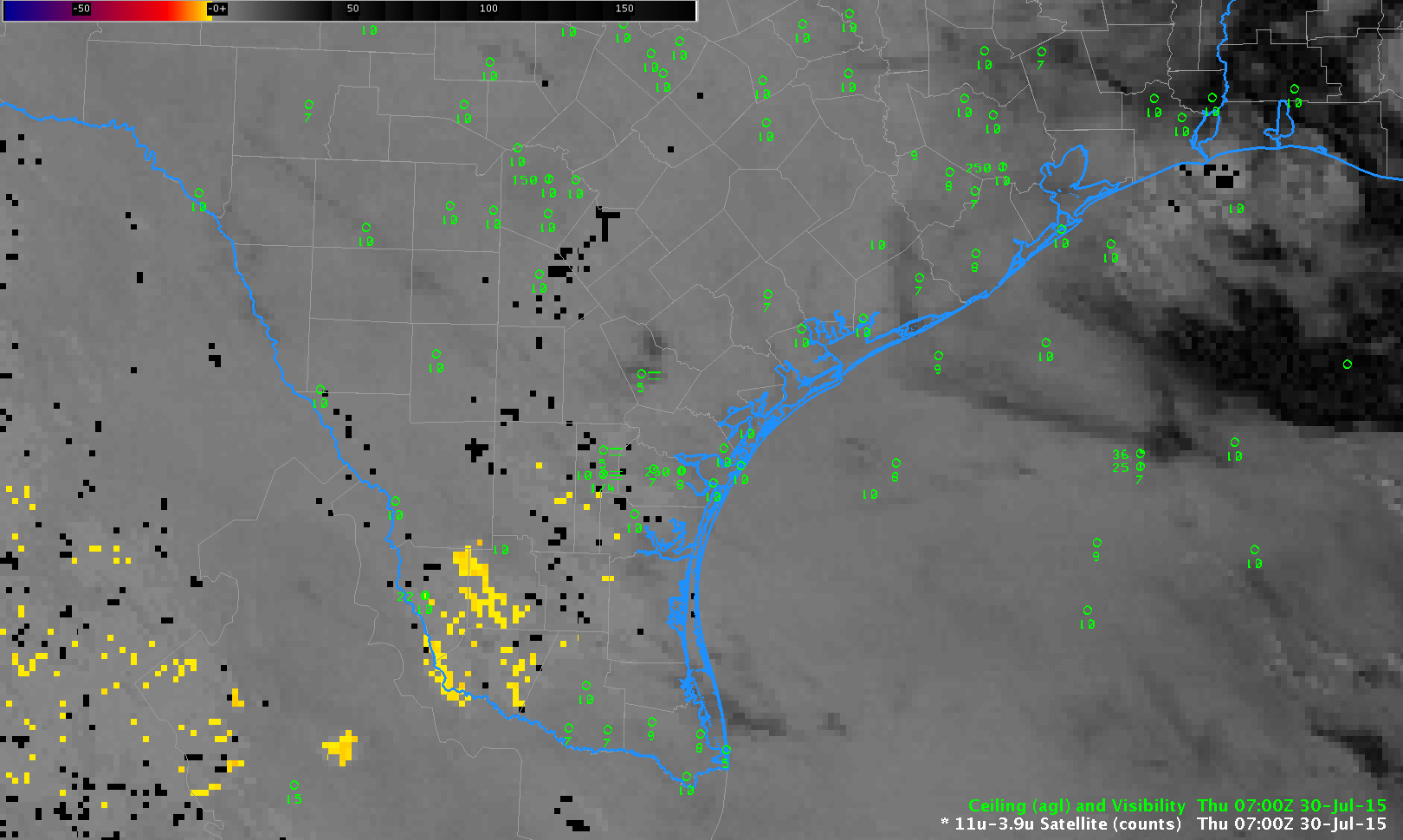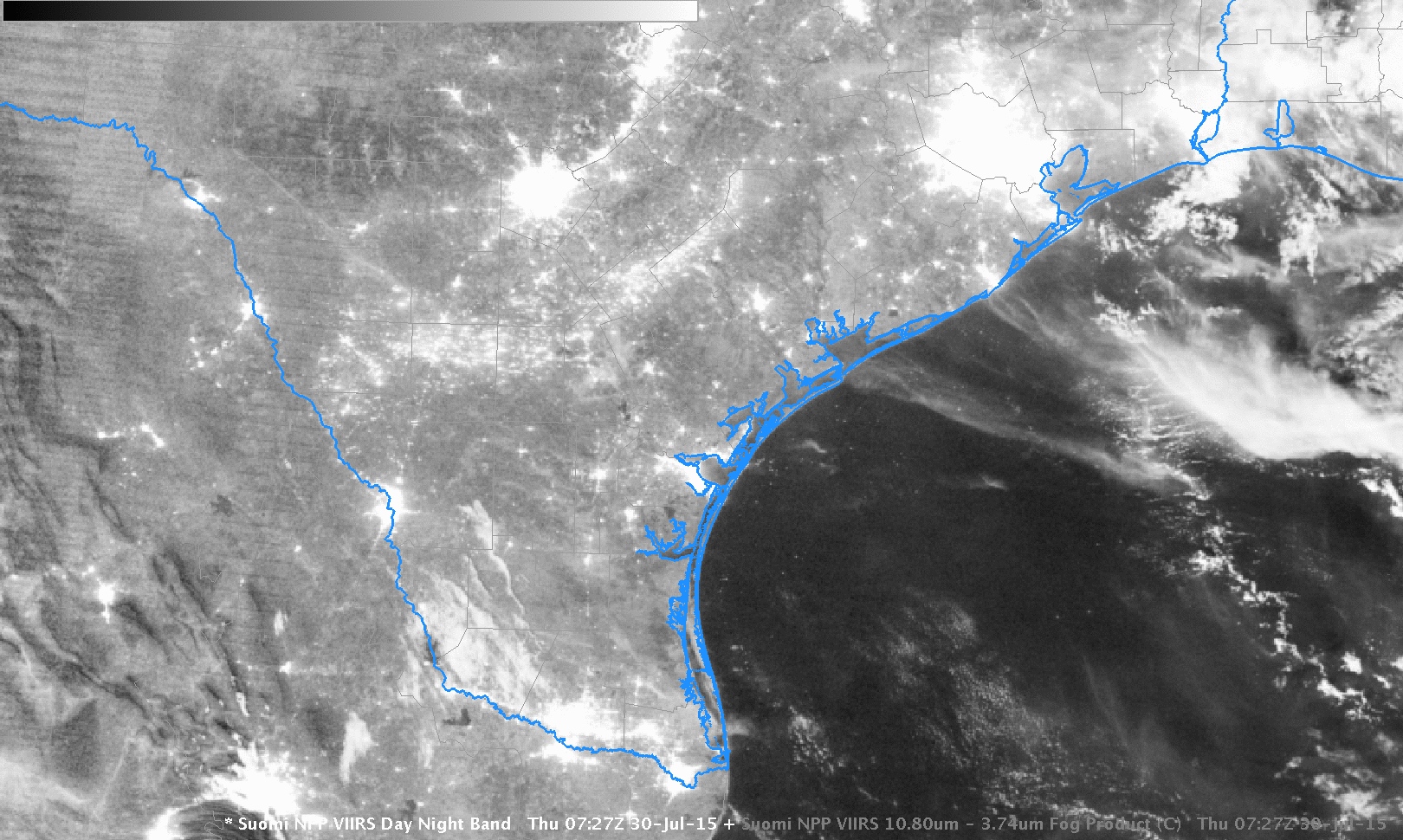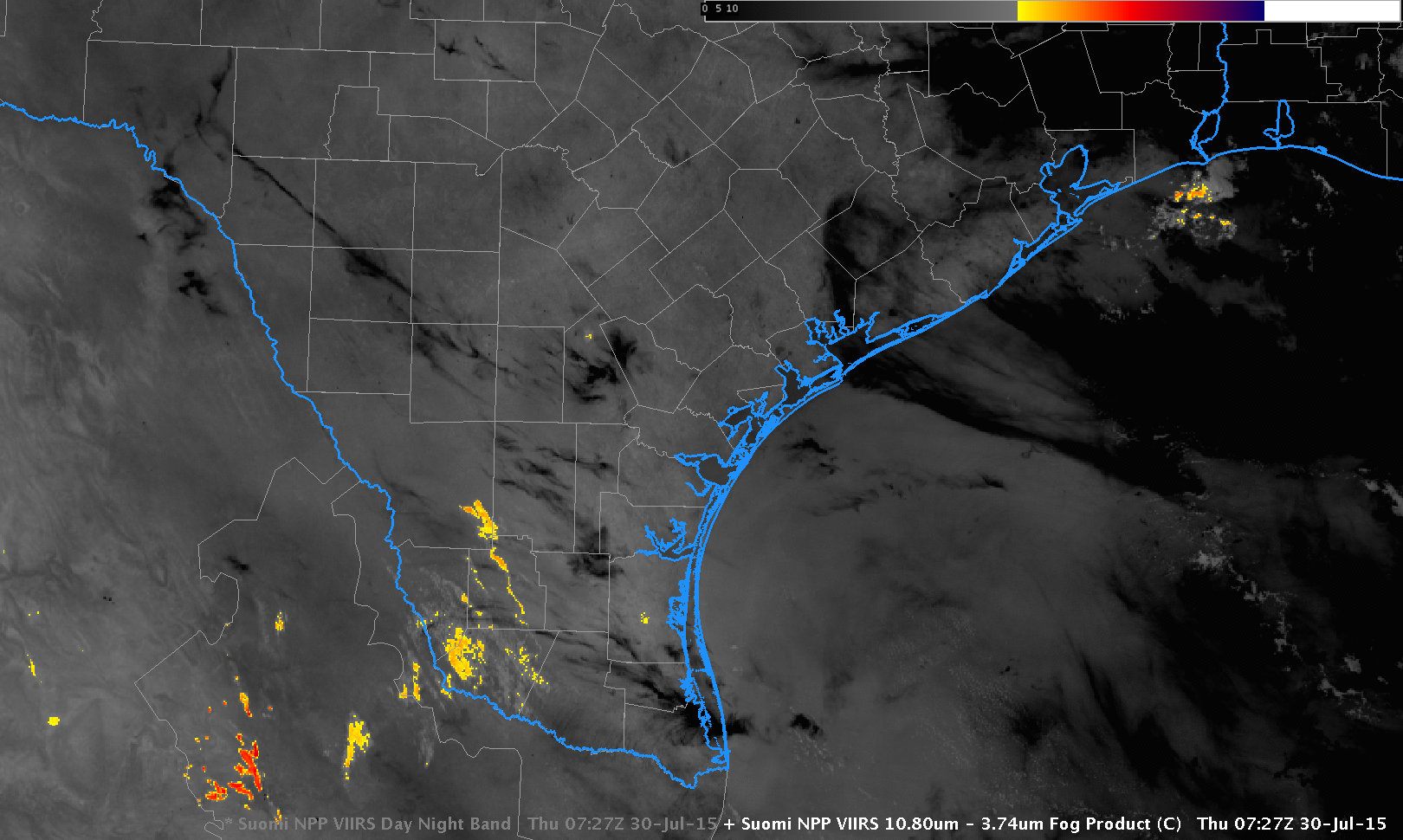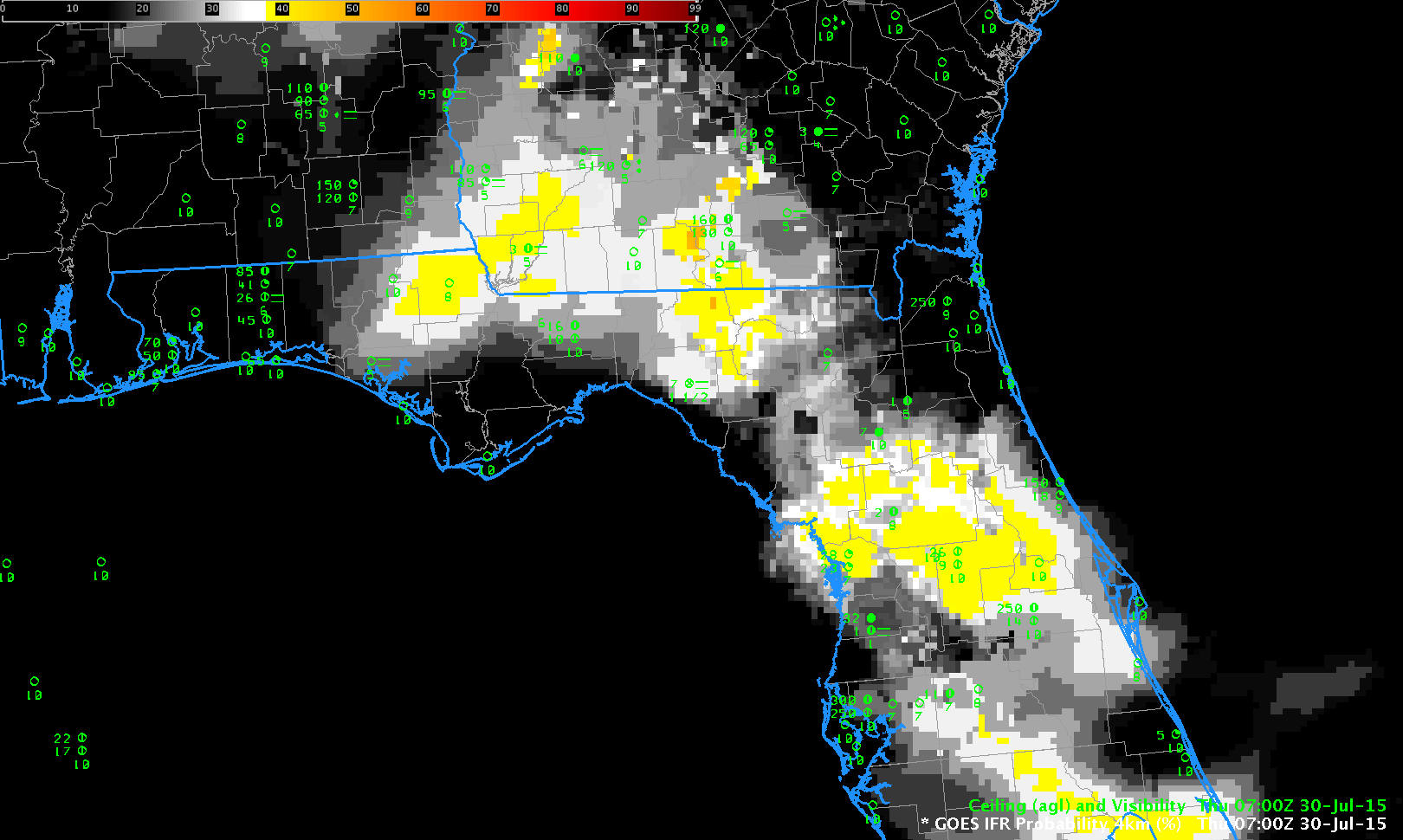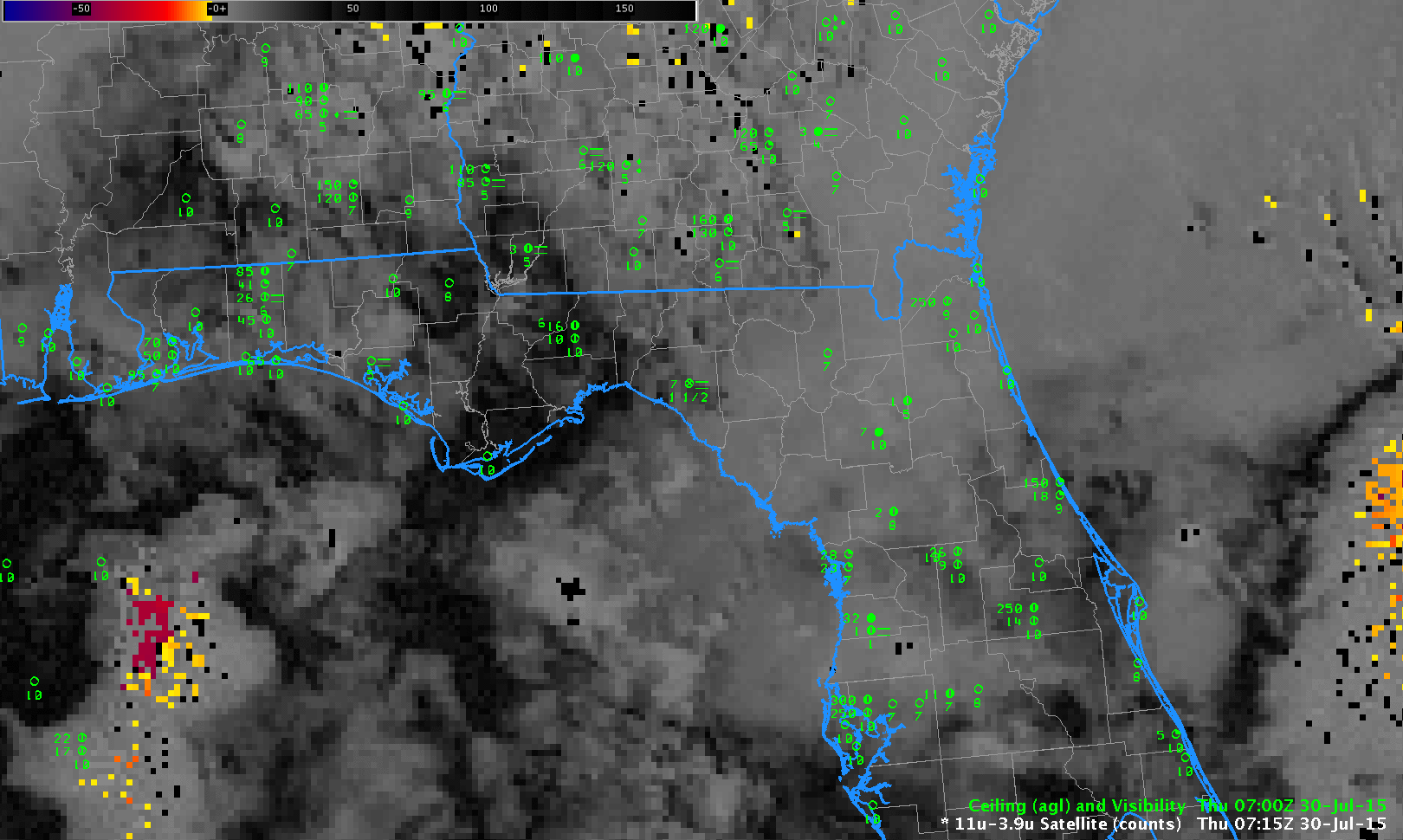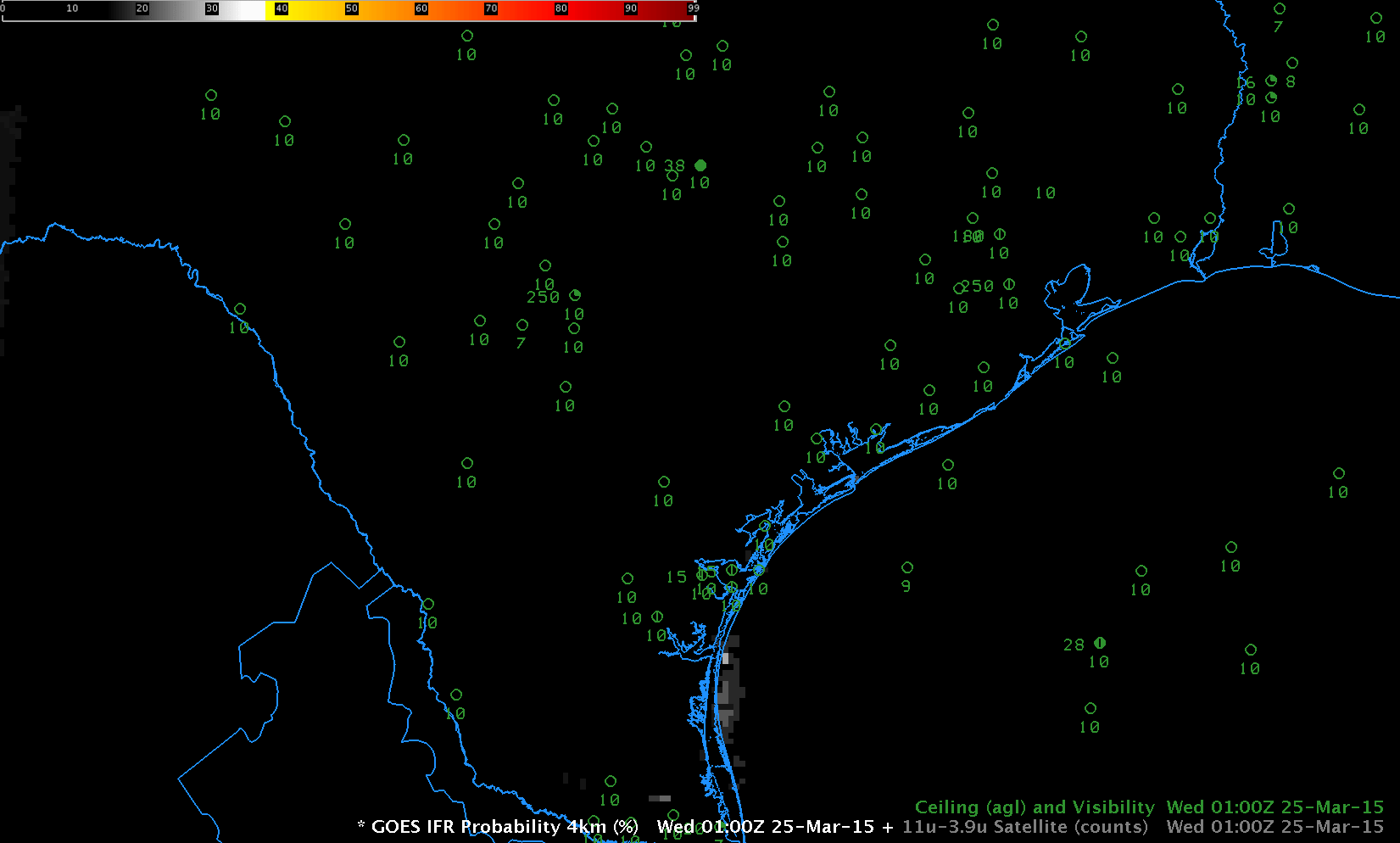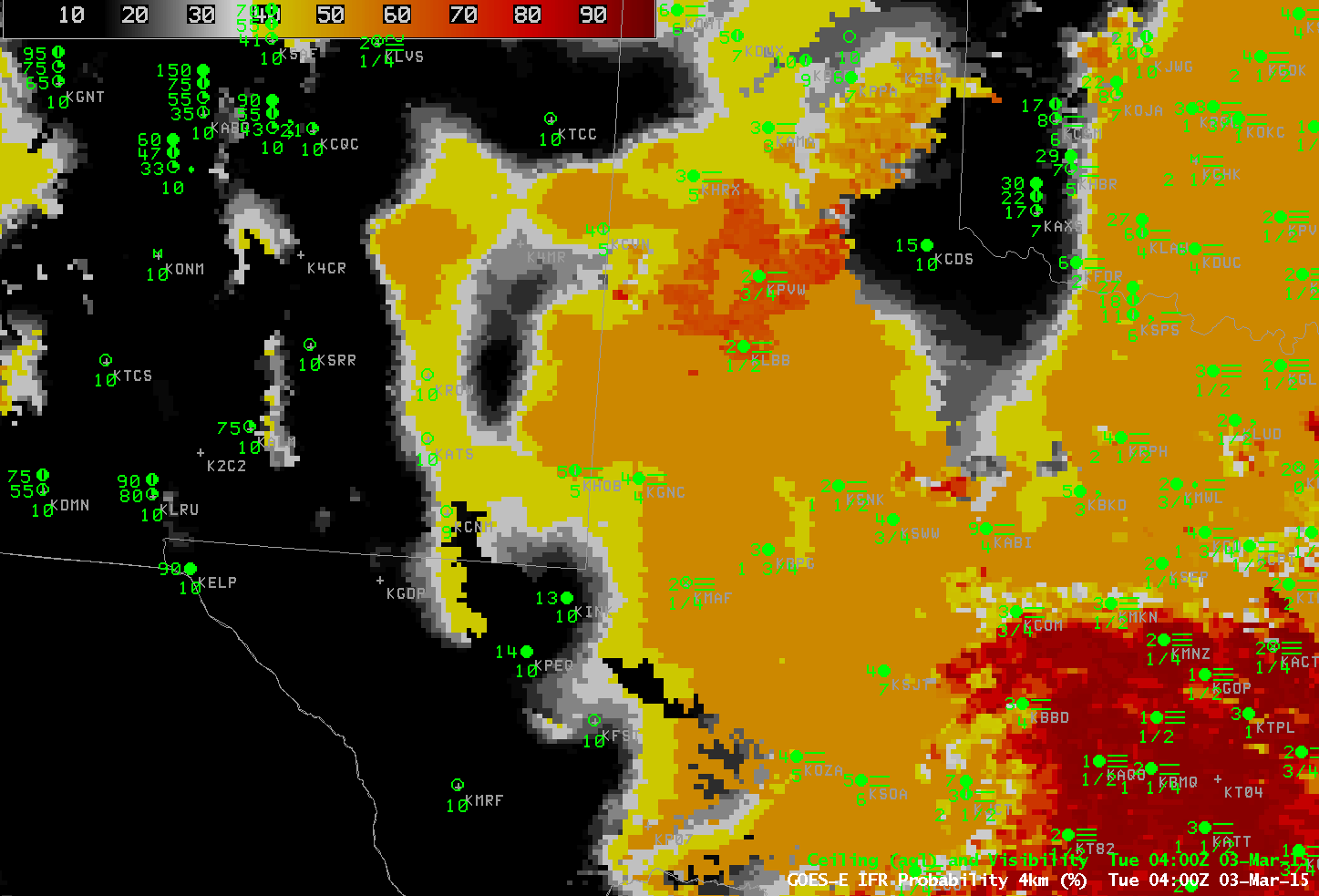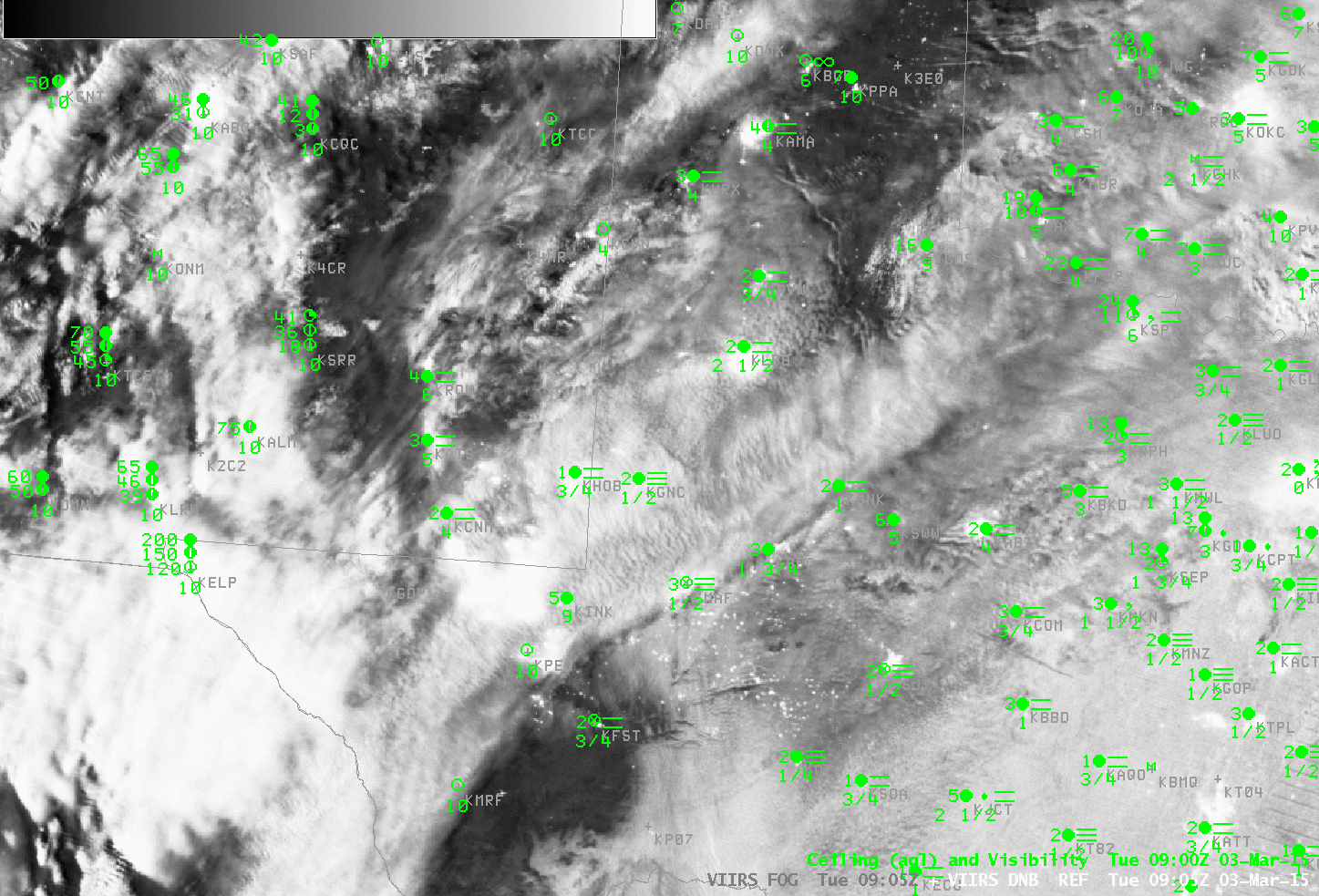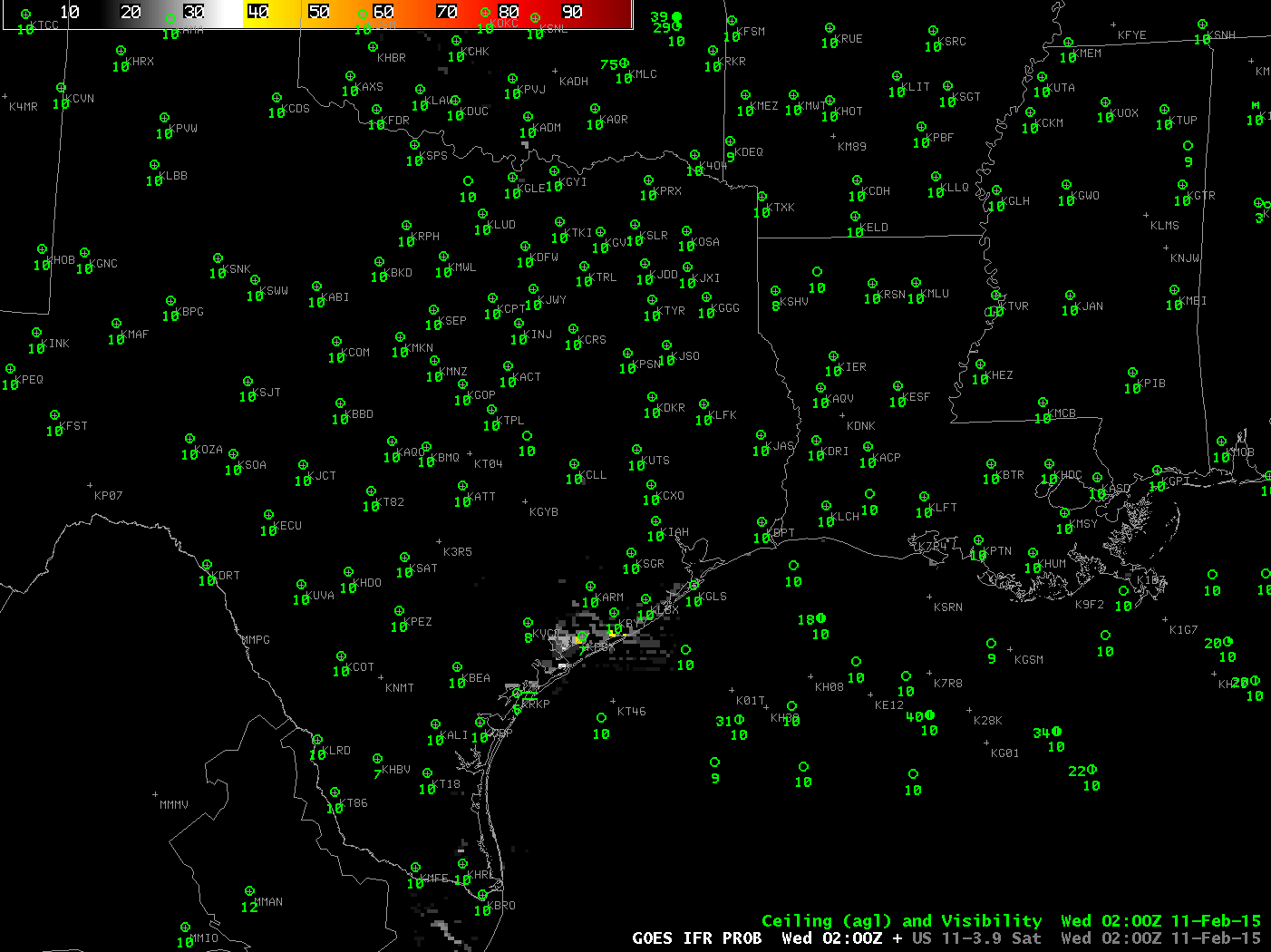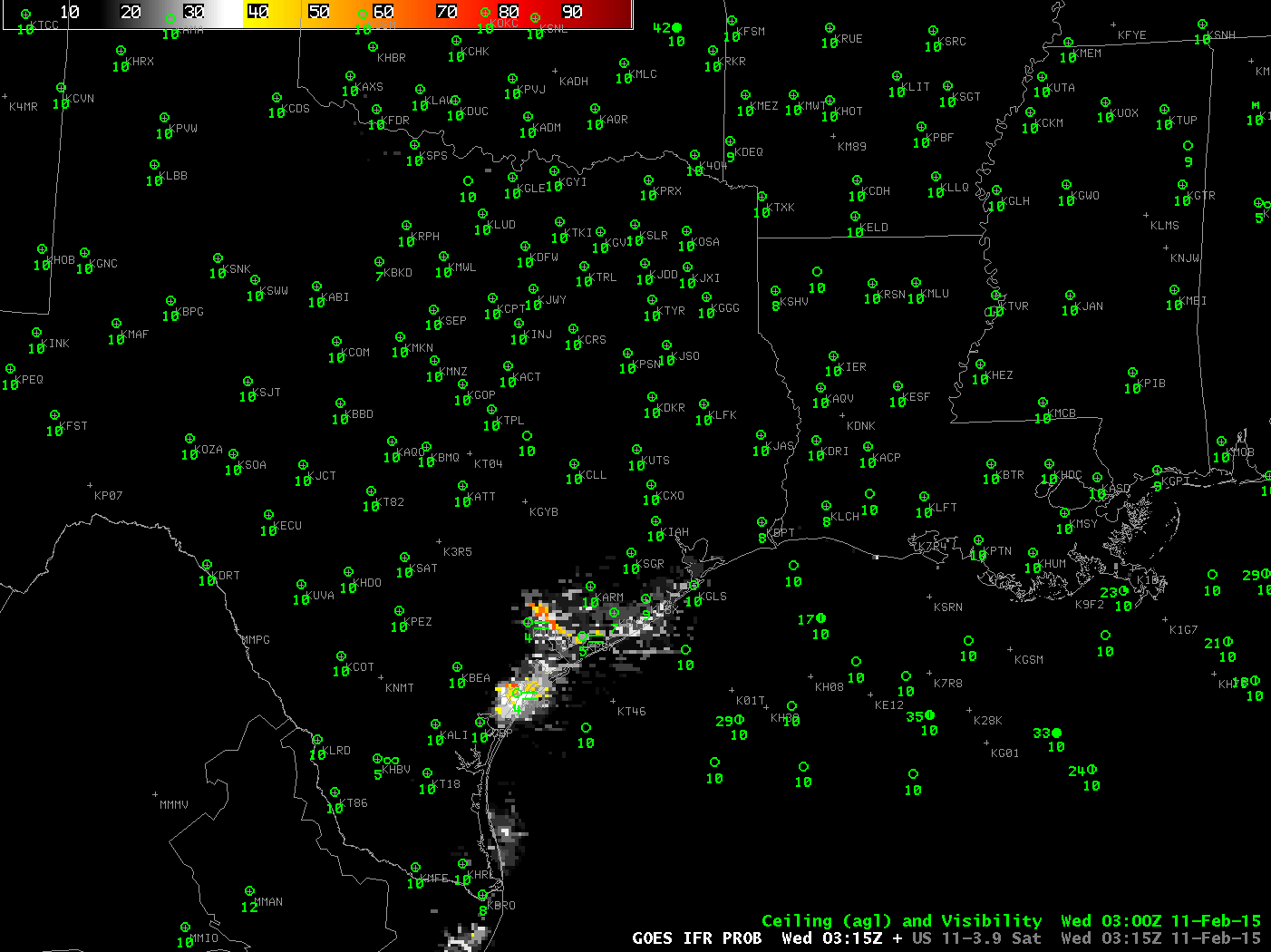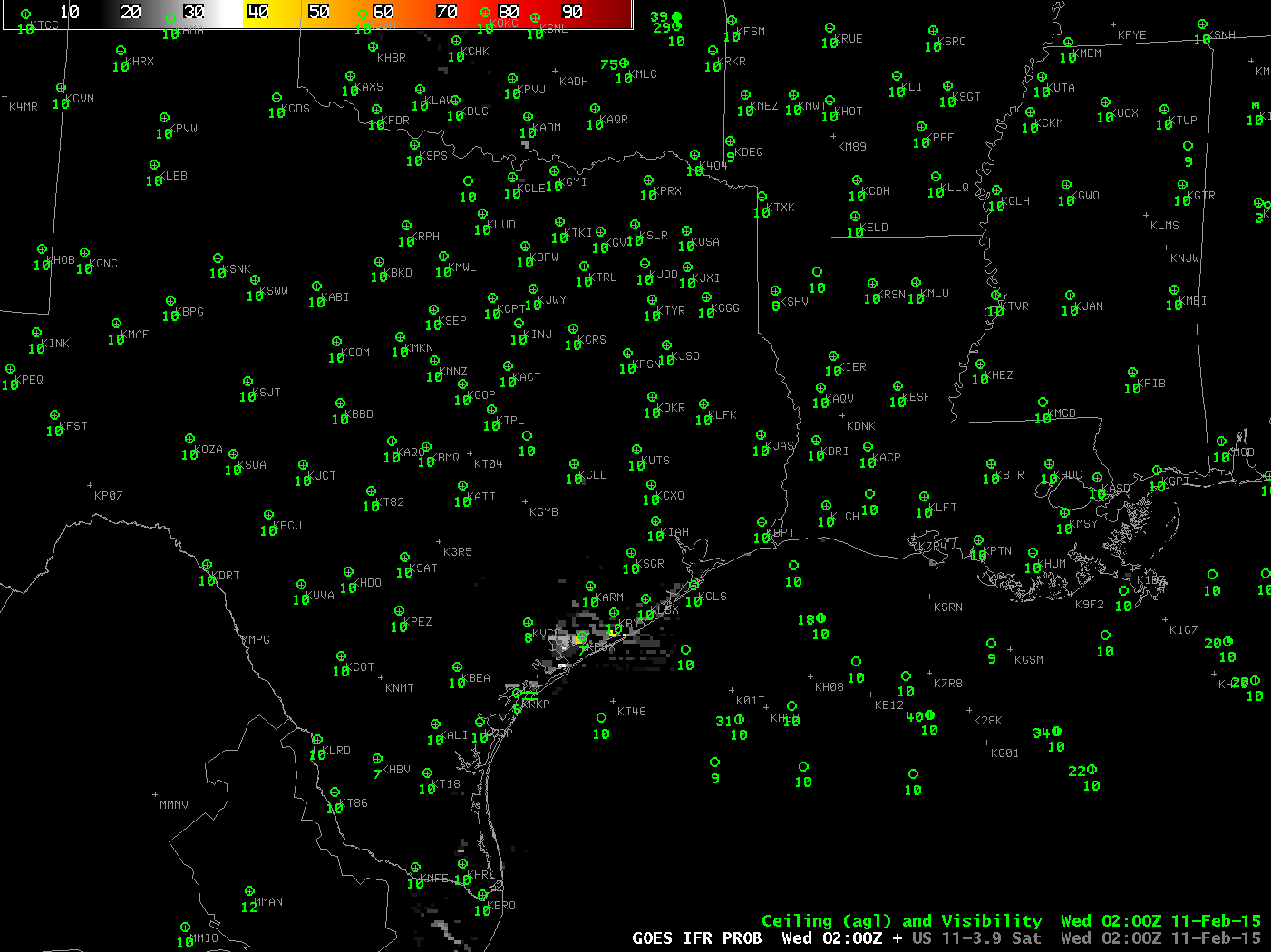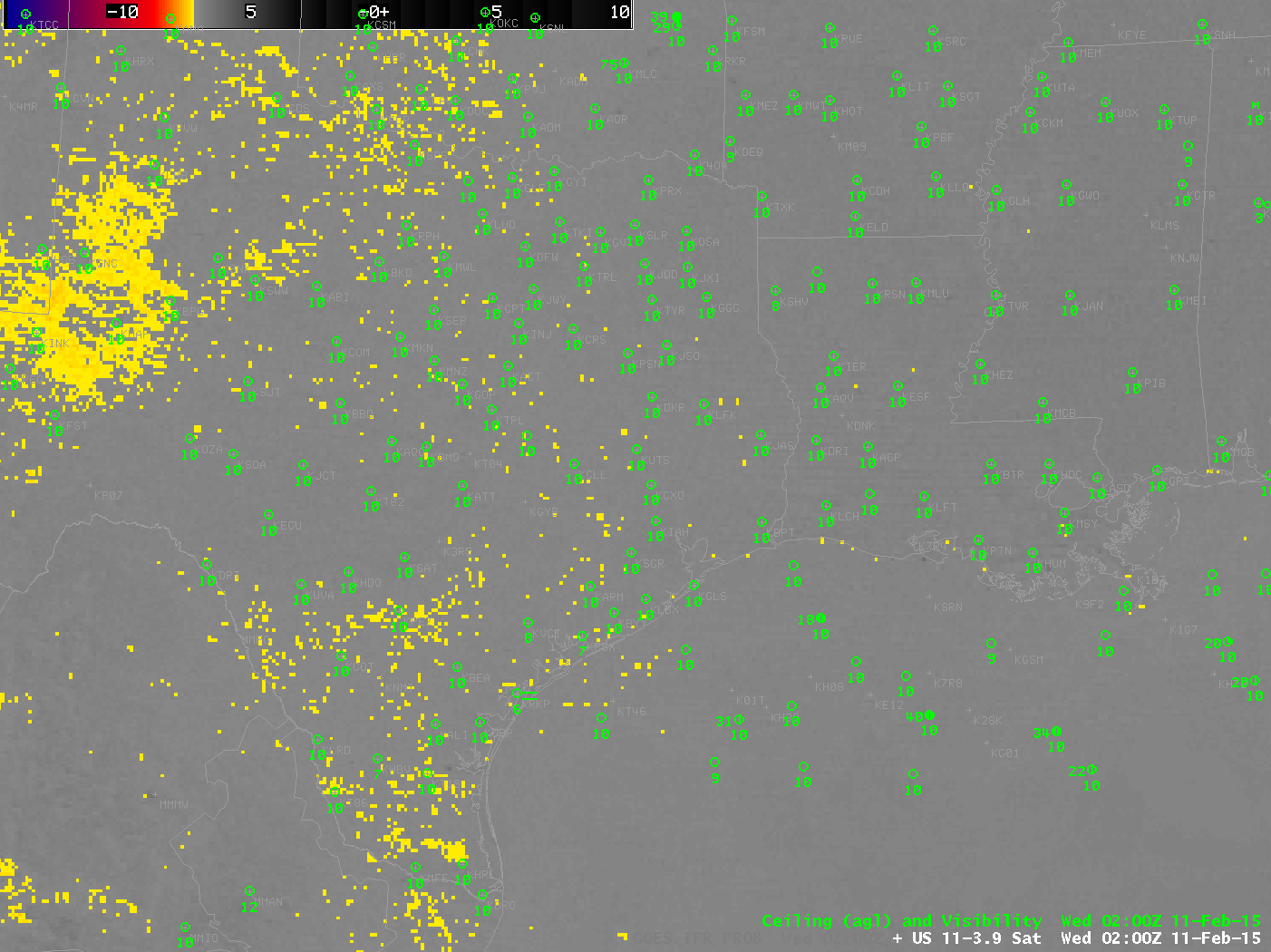A cyclone over the southern Plains, in addition to causing severe weather over Texas on 15 January also generated widespread IFR Conditions over the southern Plains, as shown below in screengrabs from the Aviation Weather Center and from the National Weather Service. An overnight Water Vapor image (here) testifies to the ubiquitous presence of high clouds over the Plains; in such cases with widespread high clouds, low-cloud detection by satellite is a big problem. A strength of the GOES-R IFR Probability field is that it is a fused data product, incorporating both satellite information (not particularly useful for much of the overnight hours on 15-16 January) and Rapid Refresh model data that can be used to discern conditions near the surface. When the Rapid Refresh model suggests saturation is occurring near the surface (in, say, the lowest 1000 feet of the model atmosphere), IFR Probabilities will be large. They won’t be as large as they might be if both satellite and model data suggest low clouds are present, but useful information emerges in the IFR Probability fields, above, where the Rapid Refresh is predicting low-level saturation. IFR Probabilities are large over much of the southern Plains where IFR conditions are observed. This is the region where the color enhancement is orange.
The low pressure system develops such that high clouds diminish over Texas and Oklahoma. When that happens, the IFR Probability fields change in two ways. First, values increase because satellite data and model data can be used as predictors. When only model data can be used, IFR Probability fields will have smaller values. Secondly, the character of the IFR Probability field takes on a more pixelated appearance because the satellite data values will vary from pixel to pixel. In contrast, when only model data can drive the IFR Probability field (for example, over Kansas at the beginning of the animation), the IFR Probability fields vary quite slowly from pixel to pixel in part because of model smoothing.

Screen Capture from Aviation Weather Center (left, showing widespread IFR Conditions) and from Weather.Gov (right, showing Dense Fog Advisories in grey) (Click to enlarge)
The toggle below includes sampling over Abilene, TX (KABI), a station at the edge of the IFR Probability field. IFR Probabilities are relatively constant at ~40% for the two hours shown, but station conditions change from IFR to VFR. IFR Probabilities at Abilene become quite small by 1315 UTC, at the end of the animation above.


